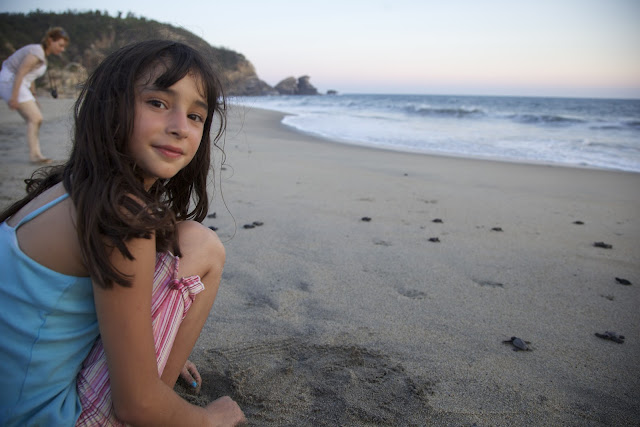Last wednesday, our neighbor S., who is the technician for our water association, knocked on the door of our house back home to let the renters know that the meter was indicating a big leak somewhere. The renters called us down here in Oaxaca, and I called a local plumbing contractor to see if he could figure things out.
In the week or so that has elapsed since, the situation has progressed from "you got a pretty big leak somewhere" to full on plumbing armageddon. The contractor walked the property and could see no signs of a leak (of course, it's the height of the wet season so telltale signs like boggy spots would be invisible). He concluded it was deep down somewhere and that they would need to deploy the big guns: heavy equipment that blows air through the pipes and "listens" for leaks.
That was thousand dollars numero uno. And it brought us bad news. We had a big leak all right, in the water intake somewhere under our wraparound deck. We also had other significant leaks pretty much all along the old water lines running out to the animals and to the old RV hookups. Long and short of it is, all those old lines had long outlived their useful life, and it was time to cap them all off and replace the intake lines completely, from the road. That would be thousands of dollars numeros too many to think about.
That's bad enough - but it gets so much worse. The sump pump had failed, and the crawlspace had flooded completely, ruining the insulation wrapping the ducts and destroying the air intake for the furnace. That sump pump was installed by my husband after it failed the last time. When the contractor said "it looks like it was more of handyman job," I kept my lip zipped. I expect my reward in heaven for that moment of restraint, I really do.
The sump pump needs to be relocated in a different part of the crawlspace, a new drainrock basin dug, and lots of more contractor-speak that I can't remember. I was going into shock by then, I think. That job would be thousands of dollars numero "we don't have them." The sump pump is getting jimmy-rigged and we will address at some point in the future. At that point, whenever it should come to pass, the situation will be addressed by a professional.
This isn't even the end of the saga. Because the old lines were laid down at different points in the house's seventy year history by several different people, they were laid all crazy and tied into the house line at all different points. The plumbers tried to run in a temporary patch so that the renters would have water while they worked on the issue, but as it turned out, the line they patched into only runs to the hot water heater. All they had was hot water, and no flushing toilets. They didn't actually tell me that for two days. By the time they called again, they had no water and no heat (duct work). I apologized, saying I had no idea it would be so disruptive and they should feel free to go to a hotel for a few days until it was all over and deduct it from the rent.
Thank god for P., my daughter's boyfriend. He has been our eyes on the ground, taking pictures and sending to me via Facebook (that's how I got these). He asks the questions I send him and sends me the answers. According to Phil, the whole team has been on site since 8 am this morning and full restoration is expected by the end of the working day.
As hard as it has been to coordinate this from Oaxaca, I am really so glad I am here and not there. If I were at home, I'd be in a permanent tizzy and probably have to take a valium. Or six.

























